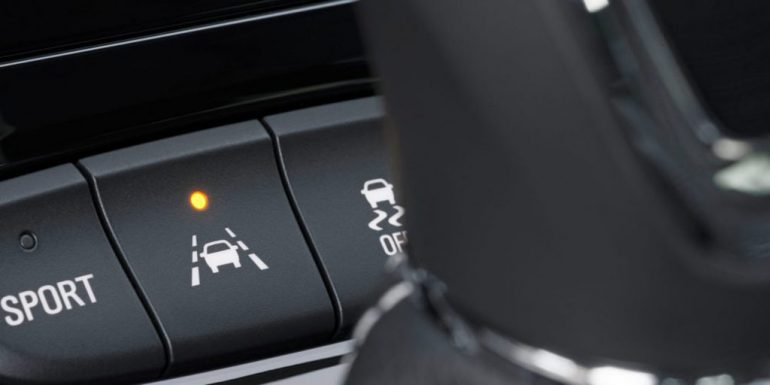
In the realm of vehicle safety, advanced driver-assistance systems (ADAS) have been game-changers. Yet, while systems like forward collision warning and automatic emergency braking (AEB) have gained wide acceptance, lane departure warning and prevention systems have struggled to find their footing—until now. A recent study by the Insurance Institute for Highway Safety (IIHS) reveals a significant shift in driver behavior, with nearly 90% of drivers keeping lane departure systems activated. This change not only underscores advancements in automotive technology but also highlights a growing recognition among drivers of the importance of crash prevention features.
Lane Departure Systems Gain Traction: What’s Changed?
Also, don’t forget that you can get discounted new car pricing with a free quote through qualified local dealer partners.
According to the IIHS study, among 2,400 vehicles observed, 87% of those equipped with lane departure warning or prevention systems had them activated. This is a massive leap from eight years ago, when only 51% of drivers used such features. So, what has driven this shift?
One major factor is the evolution of these systems. Automakers have made significant strides in making these safety features less intrusive and more user-friendly. Early versions relied heavily on audible alerts, which many drivers found annoying, leading them to disable the feature. Now, haptic feedback—subtle vibrations in the steering wheel or seat—has become a more popular option, offering a less jarring yet effective way to alert drivers when they drift out of their lane.
Another key change is how these systems are now integrated into vehicle designs. In many of today’s models, lane departure prevention is activated by default and can be more difficult to turn off. This, combined with drivers becoming more accustomed to ADAS features, has led to higher activation rates.
Why Lane Departure Prevention Matters
Lane departure warning and prevention systems address a critical but often overlooked type of accident—sideswipe, head-on, and run-off-road crashes. According to the IIHS, these types of accidents account for about 23% of fatal crashes involving passenger vehicles. While the system’s effectiveness has not yet led to the same reductions in insurance claims as front-to-rear crash prevention systems like AEB, the potential for lane departure systems to save lives is undeniable.
However, these systems can only work when they’re activated. The new study suggests that drivers are becoming more aware of this fact, and automakers are taking steps to ensure these features remain active by default.
Visual vs. Audible Speeding Alerts: A Mixed Bag
The study also looked at the usage of intelligent speed assistance (ISA) systems, which warn drivers when they exceed the speed limit. Results showed that 70% of vehicles had visual speeding alerts activated, while only 14% of drivers kept audible warnings switched on. Much like lane departure systems, the preference for less intrusive alerts suggests that automakers may need to rethink how they design these features to increase driver acceptance.
One promising approach could involve escalating alerts, where the system starts with a visual cue and gradually adds audible or haptic warnings if the driver doesn’t slow down. This kind of flexibility could make drivers more willing to keep the systems activated without feeling overwhelmed by constant alerts.
A Broader Acceptance of Safety Tech
The increased usage of lane departure prevention systems is part of a broader trend toward greater acceptance of ADAS technology. Front crash prevention systems, like forward collision warning and AEB, are now almost universally used, with 94% of drivers in the study keeping these features activated. This is up from 93% eight years ago, signaling that while these systems were once seen as optional, they are now a standard part of the driving experience.
“The results reflect a combination of better designs and a growing acceptance of crash avoidance systems, more generally,” said IIHS Research Scientist Aimee Cox. As automakers continue to refine their safety technologies, it’s likely that we’ll see even greater adoption rates in the years to come.
What’s Next for ADAS?
The growing popularity of lane departure prevention and visual speeding alerts is encouraging, but there’s still room for improvement. Automakers could further boost activation rates by designing systems that re-enable safety features with each new ignition cycle or by making these systems harder to turn off. This would ensure that more drivers benefit from the technology, even if they don’t actively engage with it.
For lane departure prevention systems in particular, the combination of better designs and higher usage rates should translate into fewer crashes and, ultimately, saved lives. As IIHS President David Harkey put it, “The increased acceptance of lane departure prevention should translate into larger reductions in crash rates.”
The IIHS study highlights a turning point in how drivers view lane departure prevention and other ADAS features. With 87% of drivers now keeping these systems active, it’s clear that both automakers and consumers are embracing the potential of these technologies to make roads safer. As we move forward, expect to see continued improvements in the design and integration of these systems, further enhancing their effectiveness and, more importantly, driver safety.
In an era where safety technology is advancing rapidly, it’s encouraging to see drivers finally accepting and relying on these life-saving tools.